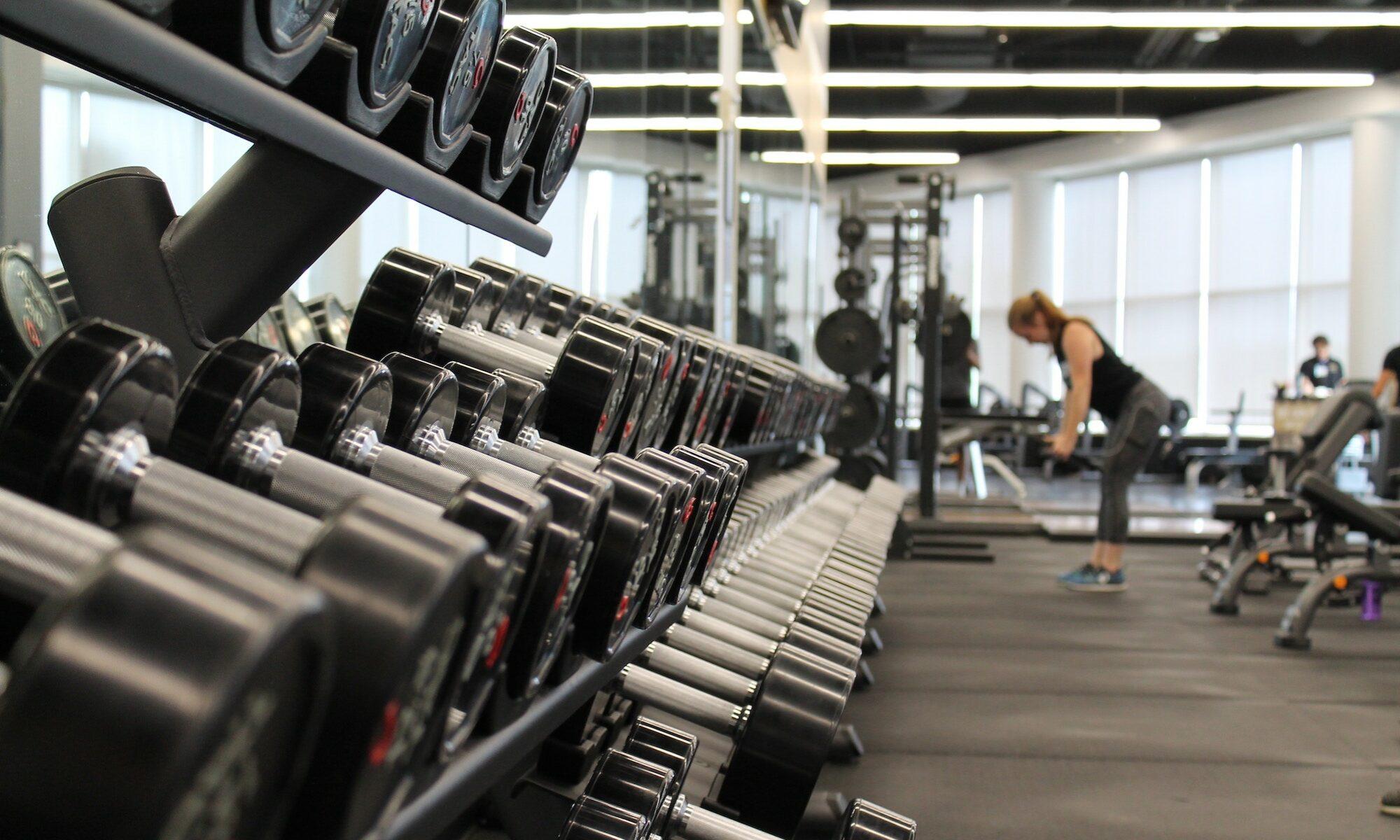In a world where consistency fuels progress, five innovative fitness gadgets are reshaping how people stay motivated in 2025. This guide dives into devices that turn everyday workouts into engaging experiences, blending data, coaching, recovery, and community. Expect practical examples, clear benefits, and real-world usage to help you decide which gadgets fit your routine, budget, and goals. Whether you’re a weekend warrior, a dedicated trainee, or simply someone who wants to move more, these tools can transform intention into action and make progress feel tangible every day.
Five innovative fitness gadgets to help you stay motivated: a comprehensive landscape for 2025
The fitness-tech landscape in 2025 is no longer about gadgets in isolation; it’s about ecosystems that fuse wearables, connected gym equipment, and immersive training experiences. Devices from Fitbit, Garmin, Apple, Samsung, and Peloton sit alongside therapy and recovery tools like Theragun and Whoop, while Hydrow and JAXJOX push the boundaries of at-home workouts with streaming rows and smart strength training. The central idea is simple: motivation grows when data translates into actionable steps, community support, and visible progress. This section surveys how these devices weave into everyday life, from tracking movement to guiding recovery and shaping habit formation. It’s not about owning a dozen gadgets; it’s about curating a cohesive toolkit that aligns with your training philosophy and daily rhythm. For many, motivation isn’t a spark but a sustained flame that flickers higher when you can see improvements, celebrate small wins, and feel supported by a connected ecosystem. The choices you make should reflect your goals—whether that means beating a personal best in endurance, building muscle, or simply showing up with more consistency week after week.
To illustrate practical applications, imagine a typical weekday. In the morning, a wrist-worn tracker from Fitbit or Garmin nudges you toward a quick mobility routine and reminds you to hydrate. Your Peloton app cues you with a 20-minute HIIT session, and you pair it with Hydrow for a low-impact, high-engagement row to complement the day’s training. After work, a Theragun helps with tissue quality and soreness, while Whoop provides a recovery score that informs how aggressively you push your next workout. These interconnected actions convert motivation into a repeatable cadence. The core value isn’t just the data; it’s the guidance on how to act on that data—whether that means adjusting intensity, tweaking recovery, or choosing a different workout channel. As you explore these gadgets, you’ll discover they work best when they fit your personality, not when they force you into a predefined program. The brands mentioned—Fitbit, Garmin, Peloton, Whoop, Theragun, Apple, Samsung, Tangram, JAXJOX, Hydrow—offer a spectrum of tools that can be mixed and matched to create a personalized fitness map. For deeper context, you can explore related topics and case studies on fitness-coded content like meal planning, pre- and post-workout routines, and science-backed training tips at fitnesswarriornation.com.
Key takeaways from 2025 gadget trends include: seamless ecosystem integration, evidence-based coaching, compact recovery tools, and immersive experiences that keep you engaged even on days when motivation wanes. The right combination fosters adherence, which is the essential bridge between intentions and outcomes. For readers who want to delve deeper into curated recommendations and real-world case studies, the linked resources below provide additional perspectives on training, nutrition, and progressive routines that align with these devices. The ongoing shift toward hybrid training—blending wearable data, home gym tech, and live-streamed workouts—means motivation is less about chasing a shiny new gadget and more about building a reliable, enjoyable framework you want to follow day after day. To get a broader sense of practical implementation, consider exploring articles such as meal plans that complement training, or science-backed fitness tips that translate data into daily action. fitnesswarriornation.com hosts a range of resources to help you tailor these gadgets to your life.
- Wearable ecosystems that synchronize data across devices enable smoother progress tracking and more precise coaching cues.
- Recovery-first approaches (Whoop, Theragun) help prevent burnout and guide training load adjustments.
- Immersive home gym options (Hydrow, JAXJOX) make consistent workouts more enjoyable and less intimidating.
- Smart training services (Apple, Samsung, Tangram) expand access to structured programs and coaching feedback.
- Community features and challenges (Peloton, Garmin Connect, Fitbit Society) boost accountability and social support.
How to maximize motivation with gadget ecosystems
When you’re choosing gadgets, think in terms of integration rather than isolated capabilities. A practical approach is to map your weekly routine and identify touchpoints where data, coaching, and recovery intersect. For instance, use a wearable to set daily movement goals, employ a connected class platform to schedule high-energy workouts, and reserve a recovery session for evenings to aid sleep quality. Create simple rules, such as “if resting heart rate rises by 5% for two days in a row, substitute one hard session for a mobility or light cardio day.” Your rules should be as personal as your goals. The more your devices speak the same language—steps, zones, calories, recovery scores—the less cognitive overhead you have to manage, and the more your motivation can stay anchored in progress rather than in sterile numbers. For further context, the community and article resources cited below can help you design a robust, motivating gadget strategy. Learn more about how these ecosystems support motivation and progress by visiting the linked resources.
| Gadget | Core Benefit | Best For | Typical Battery Life |
|---|---|---|---|
| Fitbit | All-day activity tracking, sleep insights | Consistency champions, daily step goals | 4-7 days |
| Garmin | Advanced metrics for multi-sport athletes | Runners, cyclists, outdoor enthusiasts | 5-14 days |
| Peloton | Live and on-demand classes, strong community | Structured classes, social motivation | ~2-3 days (per bike/tablet use) |
| Whoop | Recovery insights, training load balance | Race-day strategy, sleep optimization | 1-4 days (battery depends on sensors) |
| Theragun | Percussive therapy for recovery and mobility | Post-workout recovery, muscle soreness relief | 2-3 hours per charge |
| Hydrow | A immersive rower with streaming classes | Full-body cardio, low-impact workouts | 8-12 hours (typical per week use varies) |
Representative link explorations
Readers looking for deeper dives into fitness system strategies can consult professional resources on fitness and nutrition planning. For a broader sense of motion toward healthier choices and disciplined routines, check out insights at fitnesswarriornation.com on topics like Japanese walking benefits, post-workout flattening strategies, and science-backed fitness tips. You’ll also find curated guides about setting up a healthier meal plan and evaluating your fitness level. Examples of specific articles include the Japanese walking benefits guide, the meal plan for a healthier you, and science-backed fitness tips. For a sense of leadership and coaching perspectives, you can explore the Tua Tagovailoa fitness council piece, the comeback presidential fitness coverage, and other high-value reads linked below. fitnesswarriornation.com links offer context and case studies that support your gadget-driven motivation journey:
Tua Tagovailoa Fitness Council
Tom’s Guide Awards 2025 Gadgets
Smart wearables and connected gym tech: the first line of motivational defense
In this section, we zoom into wrist-worn devices and their expanding role in daily motivation. A winning approach blends tracking with coaching and community, ensuring that numbers translate into behavior change. Devices from Fitbit, Garmin, Apple, and Samsung each bring unique strengths: Fitbit tends to emphasize all-day activity and sleep metrics that help you build routines; Garmin offers advanced metrics and rugged designs suited for multisport training; Apple and Samsung ecosystems provide seamless integration with phones, apps, and health data sharing; Peloton remains a class-driven anchor for motivation through live content and social features. The magic happens when you pair these wearables with a connected gym environment such as Hydrow or JAXJOX, which add live content and progressive workouts that keep you engaged. For many, this combination reduces decision fatigue—choosing what to do next becomes less about guessing and more about following an evidence-based path that feels rewarding. The vendors’ ecosystems also enable friendly competition, shared challenges, and public progress updates, which can significantly boost adherence. A practical example is setting a daily step goal across your Fitbit or Garmin, coupling a Peloton cycle or run with a Hydrow row on alternate days, and using Whoop recovery scores to determine training intensity. Such a plan builds momentum by rewarding small wins and providing a clear signal when you should push harder or ease off. For readers seeking more structured guidance, explore linked resources and reviews from fitness experts and community leaders who discuss how to optimize the use of wearables in real-life routines.
Takeaways for motivation-ready wearables
- Choose one or two core wearables and integrate them with your preferred class or gym app to avoid data fragmentation.
- Use coach-style cues from the ecosystem to plan weekly training loads and recovery days.
- Leverage social features for accountability and friendly competition.
- Protect your sleep data as a key driver of performance improvements.
A recent note on site functionality may appear during browsing: a required part of this site couldn’t load. This may be due to a browser extension, network issues, or browser settings. Please check your connection and try again. If needed, consult the linked resources for alternative information.
Recovery and mobility gadgets: Whoop, Theragun, and beyond
Recovery is not optional; it’s the backbone of sustainable progress. Whoop’s recovery metrics help you calibrate daily effort, while Theragun’s percussive therapy addresses muscle tightness and soreness after demanding sessions. Together, they form a powerful feedback loop: you train hard, you recover smarter, and over time your performance improves without sacrificing long-term consistency. The modern recovery toolbox also includes mobility devices and dedicated therapy tools that target tight hips, hamstrings, and shoulders, which are common bottlenecks for strength and conditioning progress. Tangram, a lesser-known player in mobility tools, emphasizes user-friendly design and portability, making it easier to incorporate mobility work into a busy schedule. The synergy among these devices is not just about feeling better; it’s about enabling you to train with higher quality and lower risk of injury. When combined with broader ecosystems (Apple Health, Google/Android Health, Samsung Health), the data you collect becomes a reflective mirror of your training reality—pushing you toward smarter decisions rather than impulsive pushes. To see how recovery-focused devices influence training decisions, you can check insights on post-workout routines and science-backed tips at fitnesswarriornation.com. In practice, you might structure recovery days around a Whoop score or a Theragun session, followed by mobility and light cardio to maintain circulation and flexibility between hard workouts.
- Whoop: Recovery, strain balance, sleep optimization
- Theragun: Targeted muscle relief, improved range of motion
- Tangram: Mobility tools and user-friendly design
- Apple and Samsung health integrations for holistic wellness data
- Hydrow: Low-impact cardio that supports recovery days
- Whoop’s data-driven approach helps prevent overtraining by balancing stress and recovery.
- Theragun’s percussive therapy complements soft tissue work and mobility routines.
- Mobility tools from Tangram support daily movement quality and injury prevention.
- Integration with Apple/Samsung health unleashes cross-device insights for smarter decisions.
Connecting recovery gadgets to your goals
Recovery devices shine when tied to concrete goals: managing chronic soreness, preparing for a race, or simply staying active as you age. The key is timing and dose. For example, plan Theragun sessions for right after workouts that emphasize heavy lifting or high-intensity intervals, then use a short mobility flow the next day to maintain range of motion. Use Whoop to guide daily training loads, progressively increasing volume as your recovery scores trend upward. The Tangram system can be scheduled on off days to keep joints limber and muscles elastic, ensuring that your next hard workout starts on a solid foundation. If you’re seeking broader context on recovery science, the linked articles below offer deeper dives into evidence-based strategies. You’ll find practical guidance and case studies that show how science translates into everyday routines.
Links and resources: fitnesswarriornation.com includes articles on Japanese walking benefits, meal plans for healthier living, and post-workout strategies that support a well-rounded fitness plan. Explore these to round out your gadget-driven approach with nutrition and lifestyle choices that amplify results:
Immersive equipment is redefining what home workouts feel like and how often people actually complete them. Hydrow’s live-streamed rowing sessions create a studio-like focus in a compact home layout, turning cardio into a social event rather than a solitary chore. JAXJOX adds smart resistance and dynamic workouts that adapt to your strength level, making strength training more approachable and scalable. Tangram focuses on mobility and functional movement to complement strength and cardio, helping you stay agile and resilient as training demands escalate. This trio demonstrates how home gym ecosystems move beyond single-device utility toward a cohesive training environment that blends data, coaching, and community. The result is a stronger weekly routine that’s easier to sustain because it feels inherently engaging and goal-oriented. To see how a connected home gym can fit into your life, explore the broader ecosystem and training guidance on fitnesswarriornation.com, including workouts guides and science-backed tips that align with Hydrow, JAXJOX, and Tangram’s capabilities.Hydrow, JAXJOX, and Tangram: immersive equipment shaping home workouts
- Hydrow’s rower provides a full-body cardio option that’s low-impact yet highly engaging.
- JAXJOX’s connected strength system allows scalable resistance and form feedback.
- Tangram emphasizes mobility as a core training element, improving daily movement quality.
Images and video content provide visual motivation to complement the data-driven approach outlined above. The Hydrow, JAXJOX, and Tangram ecosystems illustrate how the best gadgets work together to keep you engaged without feeling overwhelmed by tech complexity. In the next section, we’ll discuss how to combine all these devices into a practical, motivating weekly plan that respects your time, goals, and budget.
Putting it all together: building a sustainable gadget-driven plan
Constructing a sustainable, gadget-driven plan requires a few practical steps. First, define your primary objective—endurance, strength, mobility, or a blend of all three. Then select one or two core devices that align with that objective and ensure you can reasonably integrate their data streams into a single routine. The right combination should reduce decision fatigue: you should feel guided rather than overwhelmed. For many, this means pairing a wearable (Fitbit or Garmin) with a workout platform (Peloton or Hydrow) and a recovery tool (Whoop or Theragun). Such a setup creates a feedback loop that informs daily choices—whether to push through a difficult set, swap a run for a bike, or schedule a restorative mobility session. The goal is to stay consistently engaged, not to chase every new gadget release. A well-planned combination helps you stay motivated by turning progress into clarity: you can see improvements in endurance, form, rest quality, and soreness, and you can anticipate how changes to your routine will affect your next workout. We’ve included additional resources below to help you tailor your plan to your life, including nutrition guidance and broader fitness strategies from Fitness Warrior Nation. These links offer actionable ideas to complement gadget-driven training with proven approaches to meal planning, recovery, and long-term adherence.
Save $60 Under Desk Elliptical
Assess & Enhance Fitness Levels
Workout Guides by Fitness Level
FAQ
Which gadget should I start with if I’m new to fitness tech?
Start with a wearable that fits your daily routine, such as Fitbit or Garmin, coupled with a connected class platform like Peloton. This creates a simple, motivating loop: track daily activity, join engaging workouts, and watch progress accumulate over weeks.
Can I mix devices from different ecosystems (e.g., Apple, Samsung, Garmin with Peloton)?
Yes. The most important factor is data compatibility and ease of use. Choose devices that share common data points (steps, heart rate zones, recovery scores) and allow you to export or sync data to a central app. This minimizes friction and maintains motivation.
How do I avoid gadget overload and stay consistent?
Pick a core trio: a wearables device, a single workout platform, and a recovery tool. Limit yourself to these three active components and schedule dedicated time in your week for workouts, mobility, and recovery. Regularly review progress and adjust workload gradually to prevent burnout.
Are these devices essential for long-term results?
Not strictly essential, but they can significantly boost consistency and adherence. The key is turning data into concrete actions and maintaining a training plan that aligns with your life outside the gym. Use gadgets as tools to support your goals, not as a source of stress or distraction.
For further reading and inspiration, explore the wide range of related resources on Fitness Warrior Nation, including articles about nutrition, training plans, and science-backed tips. Links provided throughout the article connect you to deeper dives into the science and practice of motivation through fitness technology.


